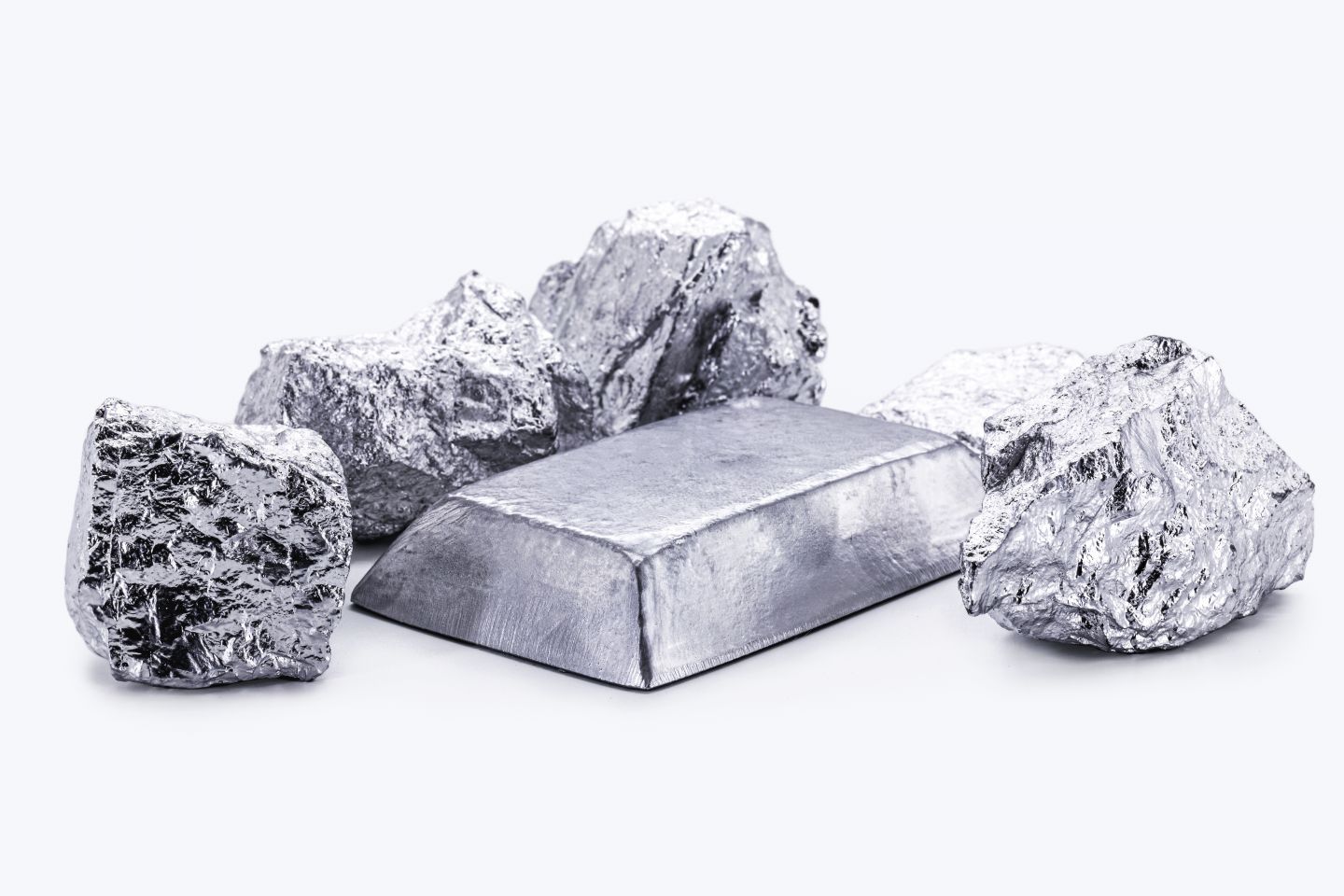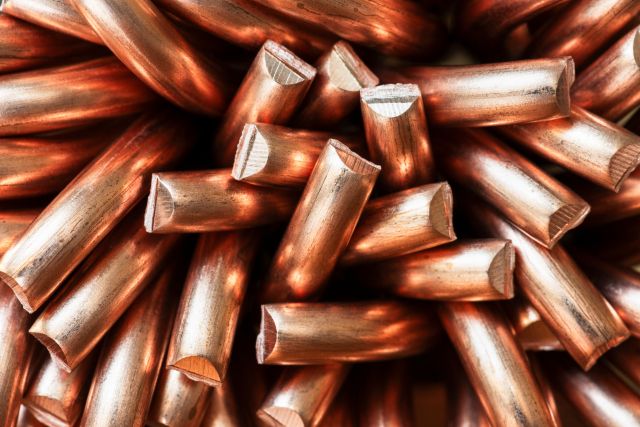What is palladium and how do I trade it?

Learn about Palladium and its commodity price history, how it works, along with trading hours and how to trade Palladium via CFDs.
What is Palladium?
Palladium is a rare, silvery-white precious metal belonging to the platinum group metals (PGMs), valued for its versatility and resistance to tarnish. Known for its ductility, it plays a critical role in industrial applications and is traded as a sought-after commodity.
Primarily extracted as a byproduct of nickel and copper mining, palladium's largest producers are Russia and South Africa. Its most significant use is in catalytic converters, which reduce harmful vehicle emissions, but it’s also used in electronics, jewellery, and dentistry.
Thanks to its scarcity and industrial demand, palladium is among the most expensive metals, occasionally surpassing gold or platinum in value.
Palladium vs gold vs silver: What are the differences?
Palladium, gold, and silver are all precious metals traded as commodities, and as such they share some similarities as well as differences. Here’s how they compare:
|
Palladium |
Gold |
Silver |
|
|
Appearance |
Silvery-white with a lustrous finish. |
Yellow, shiny, and dense. |
Shiny, white, and highly reflective. |
|
Chemical symbol |
Pd |
Au |
Ag |
|
Primary uses |
Industrial metal, used in catalytic converters for vehicles. |
Safe-haven asset, jewellery, and electronics. |
Industrial applications, and jewellery. |
|
Volatility |
Higher due to tight supply and high industrial demand. |
Lower, but still volatile. Seen as a stable store of value. |
Moderate, influenced by both industrial and speculative demand. |
|
Market drivers |
Car manufacturing trends, emissions regulations, and mining output. |
Inflation, currency fluctuations, geopolitical tensions, jewellery demand, and central bank policies. |
Economic trends, industrial growth, and trader interest. |
|
Primary producers |
Russia, South Africa, and Zimbabwe. |
China, Australia, and Russia. |
Mexico, Peru, and China. |
|
Related stocks |
Anglo American Platinum (AMS) |
Newmont Corporation (NEM) |
Wheaton Precious Metals (WPM) First Majestic Silver (AG) |
What is palladium’s price history?
Palladium’s price history showed volatility in the early 2000s, peaking at over $1,000 per ounce in January 2001 before falling to around $200 by late 2002. The 2008 financial crisis led to a sharp decline, with prices dropping to approximately $167. However, as the automotive industry recovered and emission standards tightened, demand for palladium in catalytic converters increased, driving prices above $800 by 2014.
Between 2016 and 2018, palladium’s price climbed further, breaking the $1,000 mark for the first time in October 2017. The rise during this period was largely due to a widening supply deficit, as mining output from major producers like Russia and South Africa lagged behind growing global demand.
From 2018 to early 2020, Palladium rose to over $2,500 due to a persistent supply deficit and strong demand from the automotive industry. The Covid-19 pandemic caused temporary disruptions, with prices briefly declining in 2020, but they quickly rebounded.
An all-time high
In March 2022, palladium reached an all-time high of over $3,400, driven by tightening emissions standards for vehicles and concerns about supply disruptions in Russia, a key producer, due to the war in Ukraine.
Palladium prices remained elevated in 2022. However, a downward trend began in 2023, with the average price decreasing, marking a significant decline from the previous year. This decline continued into 2024.
In early 2025, palladium traded at approximately $974.50 per ounce.
What factors might affect the palladium live price?
Palladium’s price may be influenced by a range of factors, including industry-specific demand, supply constraints, geopolitical dynamics, and broader macroeconomic trends.
Automotive industry demand
Palladium is used in catalytic converters, making its price sensitive to trends in the automotive industry. Stricter emissions regulations have historically increased demand for palladium in petrol and hybrid vehicles. However, the growing adoption of electric vehicles (EVs), particularly in developed markets, may pose a long-term challenge to palladium demand. For example, as EV adoption rises globally, palladium’s industrial utility may diminish.
Supply challenges and geopolitical risks
The supply of palladium is heavily concentrated, with Russia and South Africa accounting for the majority of global production. Any disruption in mining operations or export channels – such as sanctions on Russian metals or labour strikes in South Africa – could result in price volatility, which have historically led to significant market reactions. On the other hand, stabilisation of mining output from these regions can ease supply constraints, potentially moderating prices.
Recycling and technological advancements
Recycling is an increasingly important source of palladium supply, particularly from scrapped catalytic converters, though it currently supplements rather than replaces primary production. Advances in recycling technologies could increase the availability of secondary palladium, contributing to a more balanced market. Conversely, if recycling output falls short of expectations, supply tightness may influence higher prices.
Macroeconomic conditions
Broader economic trends also play a role in palladium pricing. Periods of economic growth typically support vehicle production, boosting palladium demand, though this effect may be tempered by shifts toward EV adoption. Conversely, a global economic slowdown or higher interest rates can reduce consumer spending on new vehicles, indirectly lowering palladium demand. Additionally, as a precious metal, palladium can attract trader interest as a hedge during times of economic uncertainty, leading to short-term price rises.
Currency fluctuations
Palladium is traded in US dollars, and its price can be influenced by fluctuations in currency exchange rates. A stronger US dollar can make palladium more expensive for buyers using other currencies, potentially lowering demand. However, a weaker dollar can make palladium more attractive to international buyers, potentially influencing its price higher..
Emerging technologies
Palladium’s potential use in emerging green technologies, such as hydrogen fuel cells, might create new demand avenues. Conversely, advances in alternative materials for hydrogen fuel cells could limit this demand.
What are the palladium trading hours?
Palladium is traded on the New York Mercantile Exchange (NYMEX), which is part of the CME Group. Its electronic trading hours are:
-
Sunday to Friday: from 11:00pm to 10:00pm UTC the following day, with a 60-minute daily break starting at 10:00pm UTC.
If you choose to trade CFDs, you can follow the palladium performance live in US dollars with our comprehensive palladium price chart.
Monitoring the commodity’s activity can help you to keep an eye out for any key fundamental or technical events that may affect short-term movements in its value.
*Trading hours may differ depending on national holidays and daylight savings time.
How to trade palladium with CFDs
Palladium is a commodity that can be traded either on spot markets or via derivatives like CFDs, which derive their value from the underlying asset. For those dealing with physical contracts, significant costs such as storage and transportation may arise, potentially causing financial strain due to unexpected fees or delivery obligations.
To avoid these challenges, contracts for difference, or CFDs, allow speculation on palladium prices without owning the asset. A CFD is a contract where one party agrees to pay the difference between the opening and closing prices of the asset.
CFDs and spread betting offer the choice of using leverage, or margin trading, allowing you to control larger positions with less capital, which can enhance potential gains but also amplifies risks. Additionally, CFDs and spread bets enable traders to go long (profiting from rising prices) or short (profiting from falling prices), providing flexibility in both bull and bear markets.
How to trade palladium with futures
You can also trade palladium using futures. Futures contracts are agreements to buy or sell palladium at a specified price on a set future date. These contracts are standardised and traded on regulated exchanges, such as the ICE or NYMEX. Futures are typically used by both speculators and producers to hedge against future price changes, and they involve a firm obligation to fulfil the contract at expiration, unless closed out beforehand.
When you trade a futures CFD, you're speculating on the price movement of a futures contract without actually entering into the physical futures contract itself. This allows you to trade futures in a more flexible way, benefiting from leverage and smaller capital requirements, but without the obligation of settlement that comes with holding a physical futures contract to expiry.
You can learn more about trading commodities with Capital.com in our comprehensive guide to commodity trading.
Palladium trading strategies
Palladium trading strategies can depend on market conditions, personal risk appetite, and time commitment, incorporating both fundamental and technical analysis.
Trend trading aims to capture momentum in palladium’s often volatile price movements, while swing trading can take advantage of short- to mid-term price fluctuations, and day traders may seek potential high-frequency opportunities during key trading hours.
For those with a long-term outlook, position trading involves broader industry trends, such as shifts in automotive demand or geopolitical risks affecting major producers like Russia and South Africa.
Consider combining multiple trading strategies, and adapt to changing market conditions.
FAQs
What is palladium (metal)?
Palladium is a rare, silvery-white precious metal primarily used in industrial applications. It is a key component in catalytic converters, which reduce harmful emissions from vehicles. Palladium is also used in electronics, some jewellery applications, and dentistry, making it a highly versatile commodity. Its rarity and growing demand in green technologies add to its appeal as a traded asset.
How to trade palladium?
Palladium can be traded via futures, options, and CFDs. Futures involve agreeing to buy or sell palladium at a predetermined price on a future date. Options give traders the right, but not the obligation, to trade palladium at a set price within a specified time frame. CFDs allow traders to speculate on palladium’s price movements without owning the metal.
What is palladium used for?
Palladium is most widely used in the automotive industry for catalytic converters, which help reduce vehicle emissions. Beyond that, it is employed in electronics for plating and connectors, in dentistry for dental alloys, and occasionally in jewellery as a durable and corrosion-resistant material. Although platinum plays a larger role in hydrogen fuel cells, palladium is also used in some of these technologies, further supporting its industrial importance.
What makes palladium different from gold and silver?
Unlike gold and silver, which are traditionally valued for their role as safe-haven assets, palladium is predominantly an industrial metal. Its price is more closely tied to demand from industries like automotive manufacturing. Palladium is rarer than gold and silver, contributing to its price volatility.
Supply chain disruptions and geopolitical events can also influence palladium prices. While gold and silver are commonly used for jewellery and trading, palladium’s value is heavily influenced by its industrial uses and evolving regulations aimed at reducing emissions.
Visit our other complete guides

How to trade copper
